CIMA CS3 Strategic Case Study Exam 2021 Online Training
CIMA CS3 Online Training
The questions for CS3 were last updated at Dec 18,2025.
- Exam Code: CS3
- Exam Name: Strategic Case Study Exam 2021
- Certification Provider: CIMA
- Latest update: Dec 18,2025
Which of the following is the best way to begin preparation for a report titled "What We Learned" regarding a recent incident involving a cybersecurity breach?
- A . Determine the sophistication of the audience that the report is meant for
- B . Include references and sources of information on the first page
- C . Include a table of contents outlining the entire report
- D . Decide on the color scheme that will effectively communicate the metrics
Which of the following is the best way to begin preparation for a report titled "What We Learned" regarding a recent incident involving a cybersecurity breach?
- A . Determine the sophistication of the audience that the report is meant for
- B . Include references and sources of information on the first page
- C . Include a table of contents outlining the entire report
- D . Decide on the color scheme that will effectively communicate the metrics
Which of the following is the best way to begin preparation for a report titled "What We Learned" regarding a recent incident involving a cybersecurity breach?
- A . Determine the sophistication of the audience that the report is meant for
- B . Include references and sources of information on the first page
- C . Include a table of contents outlining the entire report
- D . Decide on the color scheme that will effectively communicate the metrics
Which of the following is the best way to begin preparation for a report titled "What We Learned" regarding a recent incident involving a cybersecurity breach?
- A . Determine the sophistication of the audience that the report is meant for
- B . Include references and sources of information on the first page
- C . Include a table of contents outlining the entire report
- D . Decide on the color scheme that will effectively communicate the metrics
Which of the following is the best way to begin preparation for a report titled "What We Learned" regarding a recent incident involving a cybersecurity breach?
- A . Determine the sophistication of the audience that the report is meant for
- B . Include references and sources of information on the first page
- C . Include a table of contents outlining the entire report
- D . Decide on the color scheme that will effectively communicate the metrics
Seek new ways of working to improve the sustainability of forests in the future.
Code of conduct
Stakeholders – We work with all of our stakeholders, ensuring woodlands and forests meet the needs of present and future society.
Respect – We value our colleagues and our stakeholders, valuing diversity and treating everyone with consideration.
Professional behaviour – We act with integrity and objectivity to achieve high standards of health and safety, quality and sustainability in everything we do.
Learning and development – We are always learning, developing the skills and knowledge to support the company.
Communication – We are open and honest with colleagues and with our stakeholders.
Environment C We seek to protect the environment for the enjoyment of both people and wildlife in the future.
Stakeholder engagement
The communities in Marland trust us. That is the foundation of our business.
We have built up trust by integrating corporate social responsibility and sustainability into the way we run our company.
We have incorporated ten principles (see page 23) into our working practices. These encourage responsible behaviour in the areas of the environment, anti- corruption, our workforce and human rights.
Our sustainable forestry management practices are long-term investments building value for our company and the society of Marland. We have strict targets that we strive to achieve on carbon storage and are now in surplus when we take into account our harvesting and transportation emissions.
We aim to make our forests and woodlands attractive and healthy places that can be visited and enjoyed. We offer basic facilities such as woodland paths, picnic sites and cycle tracks. We locate these away from areas where timber is being harvested so that visitors are safe at all times.
We actively seek to improve the environment by sustainable planting while improving the return to our shareholders.
Employees
Our employees are our greatest asset. They add a huge amount of value to Wodd. They work together as a team to ensure Wodd runs efficiently and effectively.
We have a diverse group of employees. Some of our best lumberjacks have worked with us for over 30 years. The work is hard, but they enjoy the communal spirit and work ethic encouraged by Wodd. Lumberjacks work in small groups in remote areas, sometimes camping for several weeks. They are happy to continue this work even though it can be difficult and dangerous.
Wodd encourages safe working practices and training.
We have been improving our gender balance, although there are still too few women working in the forests. We are pleased that we now have a number of female senior employees and directors.
Customer relevance
Being aware of our customers’ needs has played a large part in our steady growth over the last few years. We value our customers and work hard at understanding their needs.
Our customers support sustainable forestry and are proud of our accredited status. We listened to our customers when they said they wanted to protect the environment and they have repaid us with their loyalty. Our customer base has increased over the last few years as they know we work to create value for them. We seek to generate value in all aspects of our business while continuing to offer excellent quality.
Customer care and satisfaction
We opened a customer care department to respond to customer queries and complaints quickly. Its focus is to respond to customer queries and complaints within an agreed time frame which depends on the complexity of the query. We are proud that we responded to 97.5% of queries within the agreed timeframe.
The number of repeat queries has fallen considerably as a result of this initiative.
Risks and uncertainties
Fluctuating demand
Wodd’s principal activities rely on demand for timber, which is a basic raw material used in many industries.
Some of our customers operate in volatile or cyclical industries. For example, the building industry buys significant quantities of timber and timber-based products. The building industry can be affected significantly by movements in economic indicators such as interest rates, the availability of credit and the property market.
Selling prices fall in response to declining demand for timber. Wodd can reduce production in response because there is very little point in selling timber when prices are low. However, there are economies of scale associated with operating at higher capacities and so we can suffer increased costs when we manage output in this way.
The company regularly reviews the movement in market prices and seeks to obtain the best value for the company’s products from existing and new customers.
International business
Many countries import large quantities of timber and their economies can further affect demand.
Apart from fluctuations in their economies, our ability to export to particular markets can be affected by trade disputes, tariffs, import restrictions and so on.
Exchange rate fluctuations
The company is exposed to foreign exchange risk. Pulpwood is priced in USD which can be volatile against the M$.
Wodd is able to utilise financial instruments to hedge against adverse currency movements; there is no guarantee that it will be possible to hedge against a particular change at an acceptable price, or that any attempt to hedge would be successful.
Employee safety
Forestry workers are highly skilled. Harvesting timber in a safe and efficient manner requires training and experience. Working in forests can be difficult and dangerous and we provide advanced safety training for all our lumberjacks. We make sure we have the most advanced safety equipment available for the workforce.
However, there is the risk that serious accidents can occur in remote areas which could be serious. We are insured fully for accidents.
Labour relations
Our forestry workers are unionised. There is an annual negotiation cycle for determining pay and working conditions. The involvement of the union tends to ensure that all companies in the industry pay broadly similar rates.
Production will be affected in the event that an agreement cannot be reached with union negotiators. It would be difficult to locate suitable temporary staff during a strike and the logistics of timber production would make industrial action, such as picketing vehicle entrances, highly effective.
Physical risks
Wodd may experience the impact of physical risks associated with forest assets such as fire, insect infestation or wind-blow in extreme weather.
Wodd’s forests are managed, or insured as appropriate, in a manner to mitigate these.
Advice on insect infestation is taken from the Forestry Authority.
Tax
Changes to tax and grant regimes governing forestry would have an adverse effect on the number of customers interested in investing in forestry and planting.
Changes in certain tax and grant regimes may adversely affect Wodd’s financial performance.
Board of Directors
Peter Sorchi, Chief Executive Officer
Peter has had a long and successful career in forestry. He started in the industry 30 years ago and worked in the forests in Scotland for several years before starting his own business managing forests for the UK’s Forestry Commission. He became involved in the certification of forests in the UK and regularly inspected woodlands for the Forestry Commission. He left Scotland and moved to Marland where he joined Wodd as a senior manager in charge of certification.
He joined the Board as Forestry Director in 2008 and became CEO in 2012.
Ibrahim Bengassa C Forestry Director
Ibrahim has been Forestry Director since 2013, having previously been the forestry manager in a large plantation in Nigeria.
Ibrahim has had a number of prestigious roles in the forestry trade. As Forestry Director, his role is to manage the forests and look after the investors.
Marcus Svenson C Finance Director
Marcus is a professionally qualified accountant. He also holds a Bachelor of Arts degree in Accounting.
He joined Wodd’s Board in 2008 after working in a number of senior roles in the timber industry in Sweden.
Sarah Johns C Marketing Director
Sarah has a degree in Marketing and has two prestigious awards for marketing gained when she previously worked for a major US company, rising to a senior managerial position.
She joined the company as Marketing Director in 2014.
Dr Maritza Lenzo C Human Resources Director
Maritza holds a Masters degree in Human Resource Management and she is a Fellow of the Marland Institute of Personnel and Development.
She has served in a variety of different entities. She joined the Wodd Board in 2013.
Dr Anton CarlovC Non-executive Chairman
Anton holds a Doctorate in Forestry Management and he is a Master of Business Administration.
He was a senior manager in a forestry management group in Siberia and became a director of it in 2008. Anton retired in 2014 and Wodd’s Board was delighted to welcome such a prestigious person to serve as non-executive Chairman.
Dr Carlov is a highly respected business person in Marland and wider afield.
He chairs both the Audit and Remuneration committees.
Stuart McLellan C Non-executive director
Stuart has been a non-executive director on Wodd’s Board since 2012. He worked in the timber industry in Canada for 15 years before joining Wodd. He worked as a lumberjack and safety officer for most of this time.
Stuart sits on the Health and Safety, Audit and Remuneration committees.
Xai Ling C Non-executive director
Xai was appointed a non-executive director in 2013. He also has experience in the timber trade. He worked in one of China’s largest building companys as a timber buyer. He is a member of the Health and Safety committee and the Nomination committee.
Lianne Edwards C Non-executive director
Lianne has been a non-executive member of Wodd’s Board since 2012. She is also a non-executive director of a major Croatian sawmill. She has had a long and distinguished association with that company, having served as senior purchasing manager for 15 years. Lianne sits on both the Nomination and Remuneration committees.
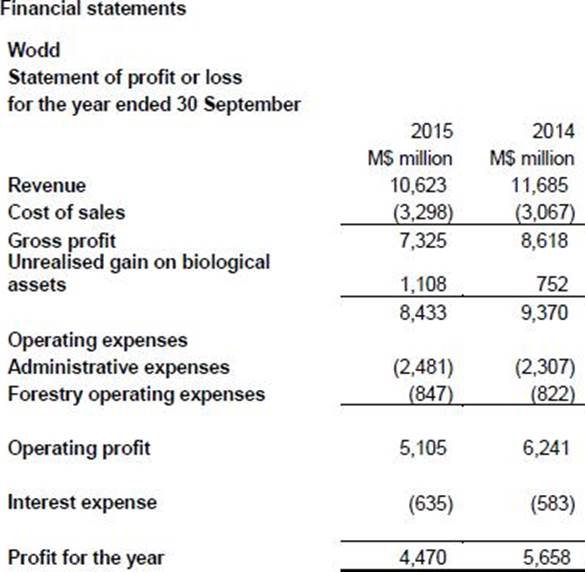
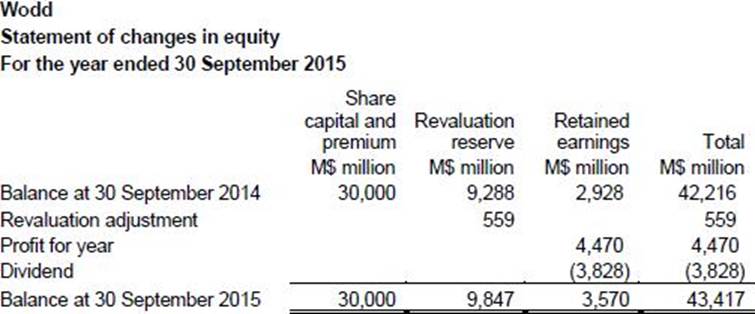
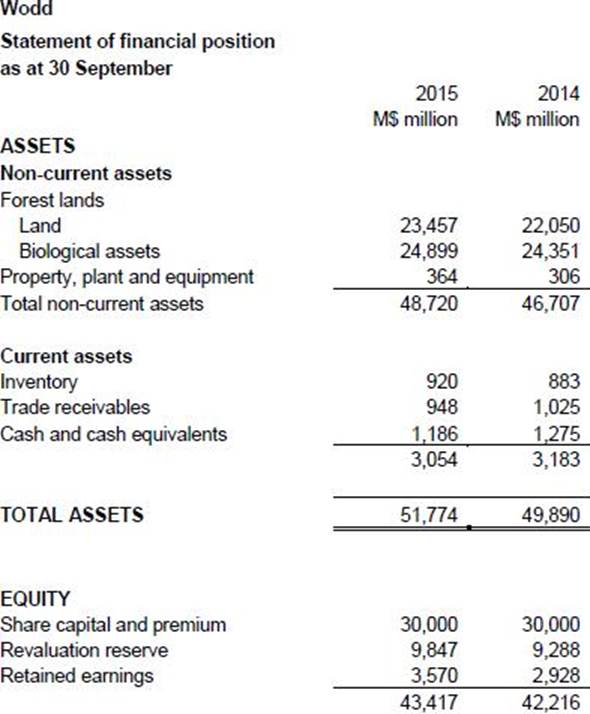
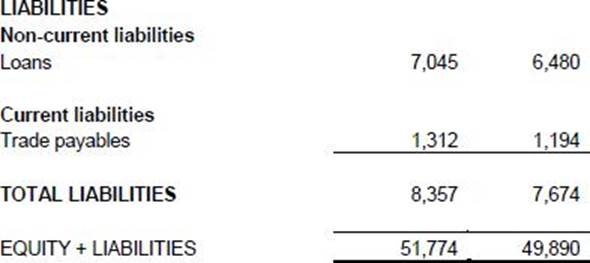
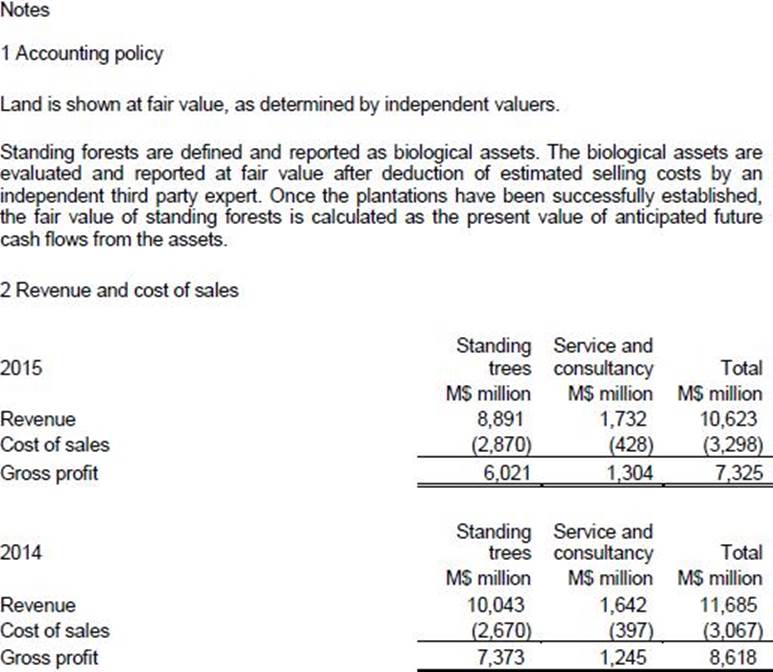
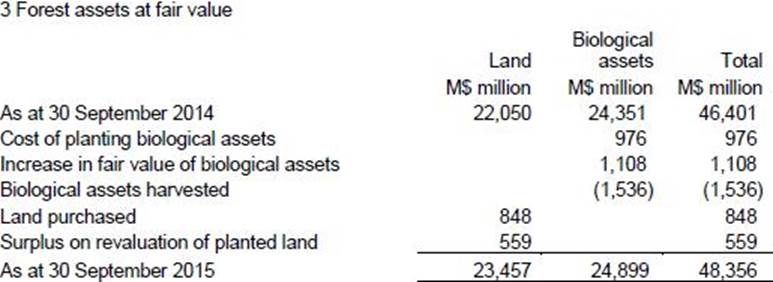
Regulatory bodies
The Forestry Authority of Marland
The mission of the Forestry Authority of Marland is to provide an ecological framework for the promotion of a healthy and cleaner environment for future generations by expanding forests and improving sustainable forest management.
The Authority offers partnership opportunities for forestry companies to create amenity woodlands for Marland, so that everyone can enjoy the benefits of the outdoors.
The Authority encourages forestry management companies to become accredited by the
Forestry Stewardship Council of Marland (FSCM).
The Authority offers grants for planting and fencing forestry plantations and also offers assistance in applying for government forestry grants.
It offers advice on insect infestation in forests and other matters of sound stewardship of forests.
The Forestry Stewardship Council of Marland
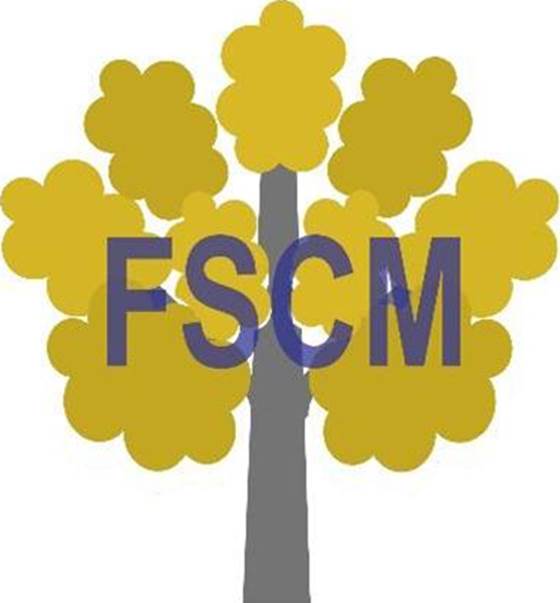
The Forest Stewardship Council of Marland (FSCM) exists to support the responsible management of Marland’s forests. We are a non-profit making and independent organisation.
FSCM publishes standards that promote environmentally sound and socially responsible development of forest lands. Companies who adhere to our standards are eligible to use our logo on their promotional materials and to display it on their products.
Consumers are increasingly concerned with the safe and responsible sourcing of timber-based products. The FSCM logo reassures customers that they are not contributing to the irresponsible destruction of forest lands, with associated harm to the environment and natural habitats.
The FSCM’s has developed ten principles, which form the basis for our standard setting programme.
These principles are listed below:
Principle 1 C Compliance with laws and FSCM Principles
Those responsible for forestry management shall respect all applicable laws of the country in which they operate and shall comply with all FSCM Principles and Criteria.
Principle 2 C Rights and responsibilities
The right to exploit land and any associated forestry resources shall be formally documented so that the legal right to conduct operations can be demonstrated.
Principle 3 C Respect for indigenous peoples
Those responsible for forestry management shall recognise and respect the legal and customary rights of indigenous peoples to own, use and manage their lands and other resources.
Principle 4 C Respect for employees and local communities
The social and economic wellbeing of forestry workers and of local communities shall be preserved.
Principle 5 C Good use of available resources
Those responsible for forestry management shall identify the various resources that can be found in the forest, with a view to maximising environmental and social benefits.
Principle 6 C Environmental impact
Those responsible for forestry management shall maintain biological diversity and shall preserve resources such as water, soil and other ecological resources.
Principle 7 C Management plan
Forestry lands shall be managed in accordance with a specific management plan that states the long-term objectives of management and the means by which they will be achieved. The plan will be tailored to the land and the nature and scale of operations.
Principle 8 C Monitoring and assessment
Those responsible for forestry management shall monitor operations so that the economic and environmental effects of operations are kept under review.
Principle 9 C Sensitive locations
Particular care will be taken in the management of activities in forests that have a high conservation value. Those responsible will pay particular attention to maintaining and enhancing the factors that create that high value.
Principle 10 C Plantations
Principles 1 to 9 apply equally to plantations. In addition, those responsible for the creation and management of plantations shall aim to complement the value of natural forests.
Press clippings
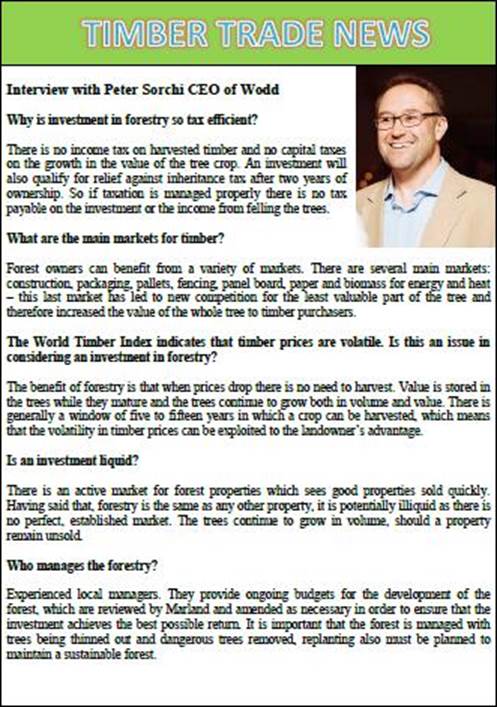
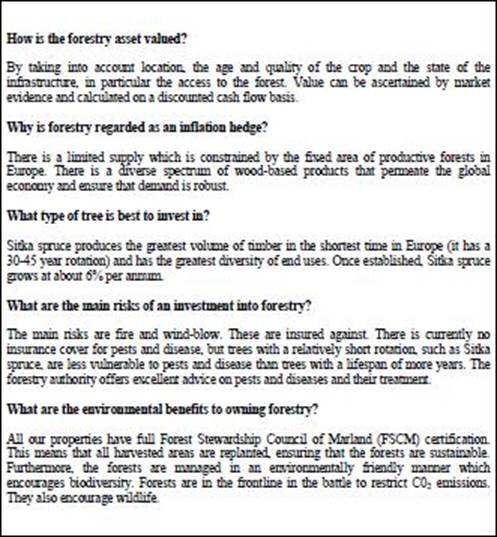
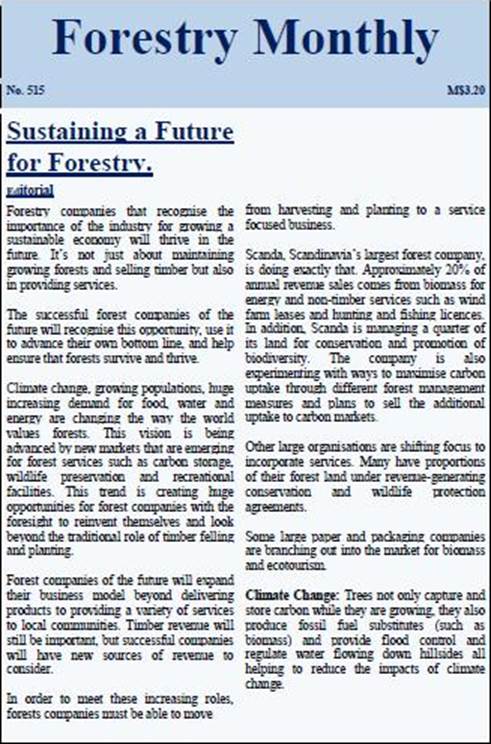
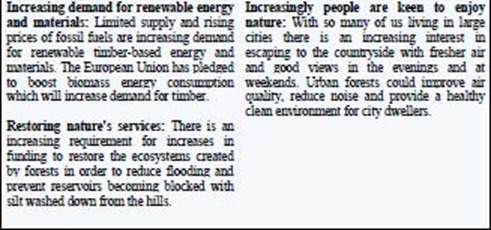
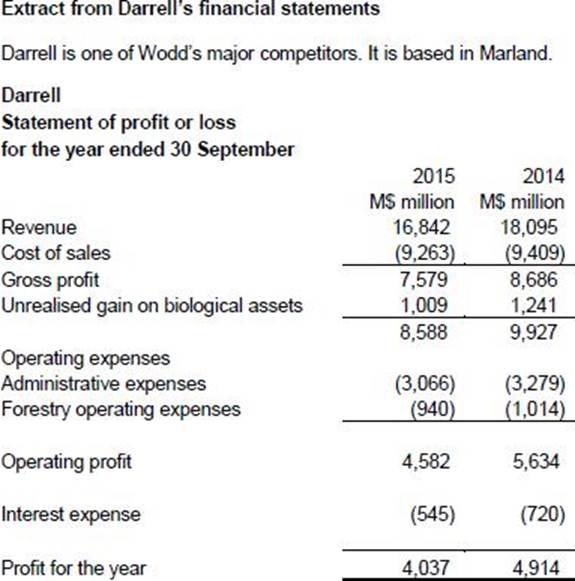
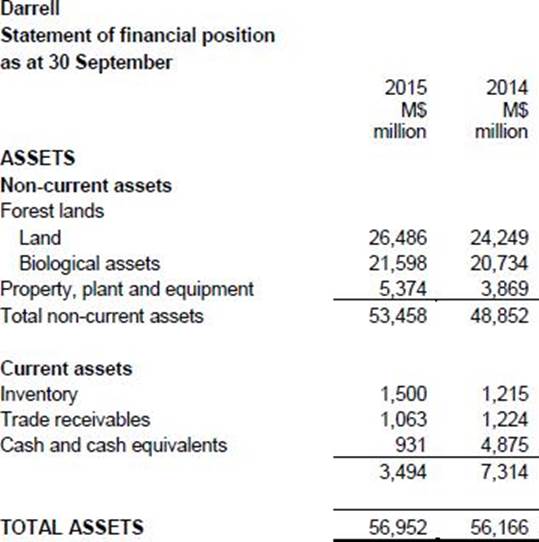
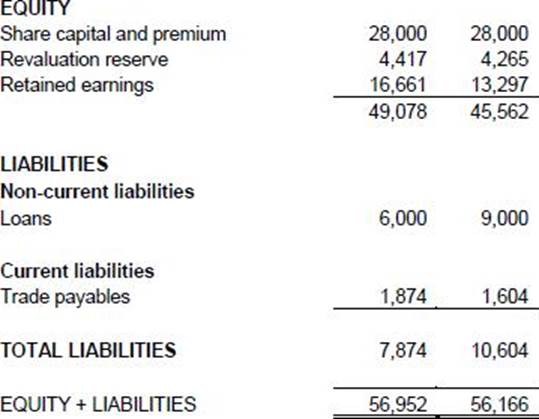
CORRECT TEXT
Reference Material:
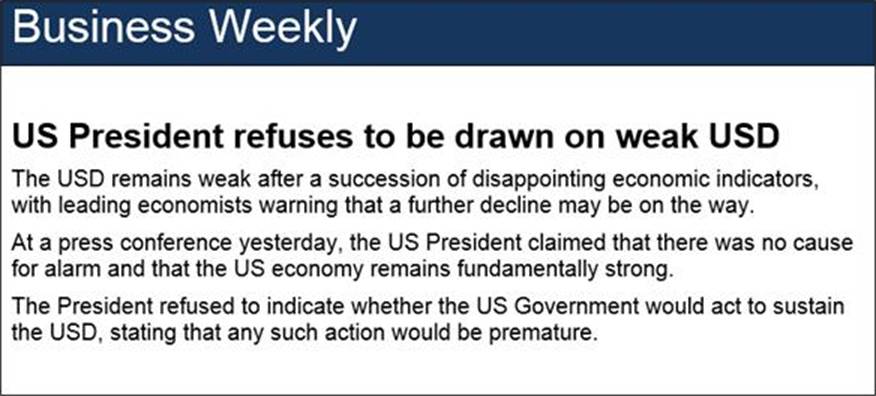
You have received the following email from Marcus Svenson, Finance Director:
From: Marcus Svenson, Finance Director
To: Senior Finance Manager
FW: Pricing
Hi,
I am forwarding an email from Sarah Johns.
Sarah has not been with us for very long and this is her first experience of dealing with a currency price movement.
I am really busy, so I need you to respond to her requests. Please email her as soon as possible.
Marcus
From: Sarah Johns, Marketing Director
To: Marcus Svenson, Finance Director
Subject: USD movement
Hi Marcus,
A lot of our biggest customers are threatening to cancel orders unless we reduce our selling prices. Timber and associated products are commodity items that are priced in USD, so I thought that our prices would automatically remain competitive regardless of what happened to the USD. I am particularly confused over domestic sales, because many of the customers who have threatened to cancel are based in this country and we invoice them in M$.
Please help me to understand why the M$/USD exchange rate can affect our competitive position in this way.
I also wish to know why you have chosen to do nothing to hedge against this risk. If you look at the attached article you will see that the USD is an issue in the business news.
Sarah
CORRECT TEXT
You have received the following email from Marcus Svenson, Finance Director:
From: Marcus Svenson, Finance Director
To: Senior Finance Manager
Subject: Investment opportunity
Hi,
The Board is considering an investment opportunity to buy a forest in Bravador, a country in South America. This will be a major expansion and will also enable us to diversify into new lines. For example, the forest contains lots of hardwood varieties that we could sell to companies in the double glazing industry or to furniture manufacturers. I downloaded the attached extract from an online encyclopaedia for your information.
The forest that we are planning to buy has not been used for commercial purposes until now. The land belonged to the Government for many years and it has been left to grow naturally. The Government is now keen to sell the land and has agreed that it may be used for commercial forestry purposes.
This investment will enable us to increase our output of softwoods by up to 20% per year, in addition to enabling us to enter the hardwood market.
I need two things from you. I need you to recommend a suitable approach to managing our
relationship with the Bravadorian Government. I also need you to identify and explain the political risks that will remain even if we succeed in creating a sound relationship with the Government.
Marcus
Reference Material:
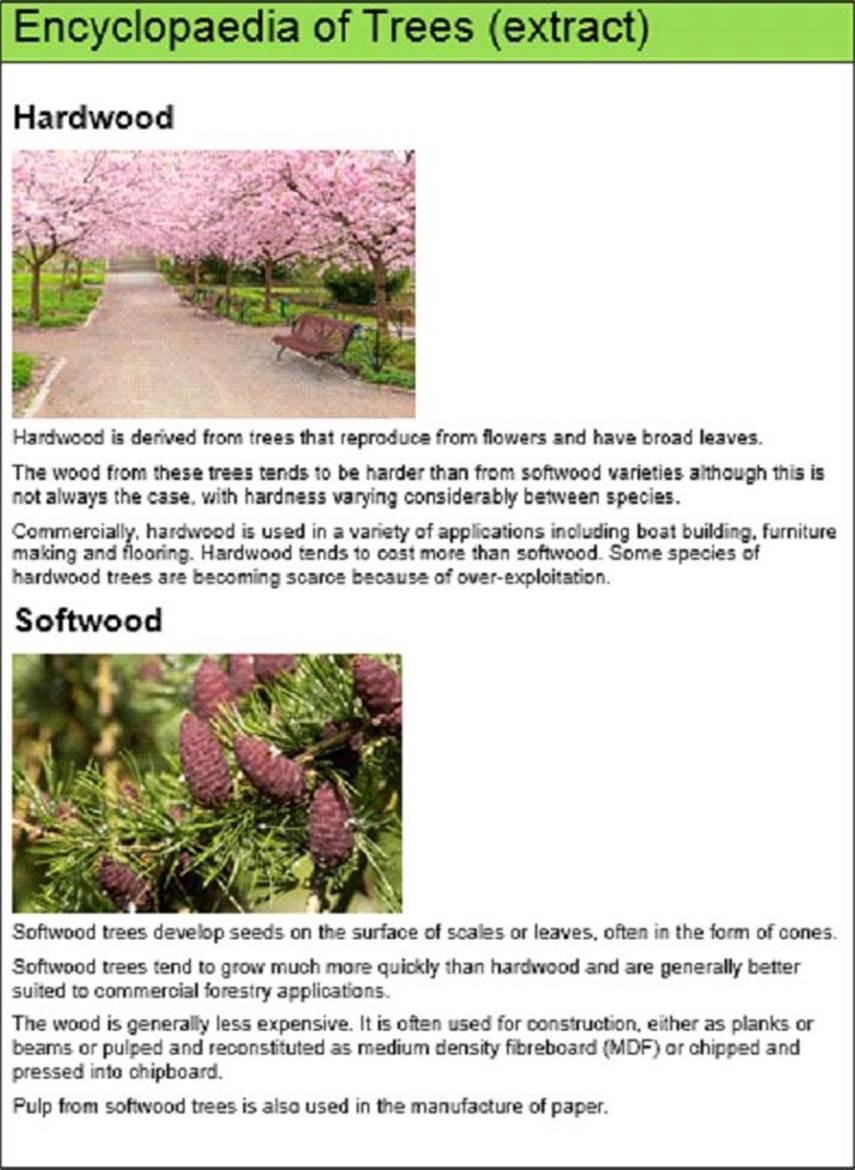
CORRECT TEXT
Two months have passed since the threatened disruption of the building work on the biomass power station. The threat has been resolved and work is again under way on the development.
You have received the following email from Peter Sorchi, CEO:
From: Peter Sorchi, Chief Executive Officer
To: Senior Finance Manager
Subject: Wildlife survey
Hi,
I tried to obtain some trustworthy advice from your boss this afternoon, but have come away feeling quite unsure that we are on the same wavelength.
As you know, the law in Marland is very clear concerning the protection of rare species of wildlife. Before building work commences on our new power station the Government will send a survey team to check for the presence of protected species. The attached article shows how sensitive an issue this can be.
As part of our corporate social responsibility, every one of Wodd’s forestry teams has a small team of wildlife officers, whose job is to survey the forest and to identify all natural habitats. Trees can grow undisturbed for many years in a commercial forest before they are harvested and so natural habitats can become well established. Our wildlife surveys enable us to limit the harm done when trees are felled.
One of Wodd’s wildlife officers in the North Forest has submitted a report on the sighting of a rare species of bat in the area that will be cleared for the power station. The report states that these creatures tend to be difficult to observe because they only come out very late at night and tend to roost in dense forest. This could, potentially, delay the start of work for six months while the bats are captured and relocated. Relocating the bats will also be expensive.
The Finance Director’s advice was to ask the wildlife officer to change the report, stating that the original version was submitted in error and that the sighting occurred in a completely different part of the forest, well away from the planned construction site. There is only a small possibility that the Government inspectors will find the bats during their own inspection. In the event that they do then Wodd can claim that it was unaware of the bats’ presence.
This whole exchange raises a number of issues for me.
Should we spend shareholder money on protecting wildlife in our forests?
What are the implications for our internal control system of the Finance Director asking for this report to be changed?
What are the difficulties in motivating our wildlife officers and how might we overcome these?
The Chairman is always complaining about how the executive directors are too aggressive when it comes to making a profit .
How might I address that concern?
I would appreciate your response on each of the above issues.
Peter
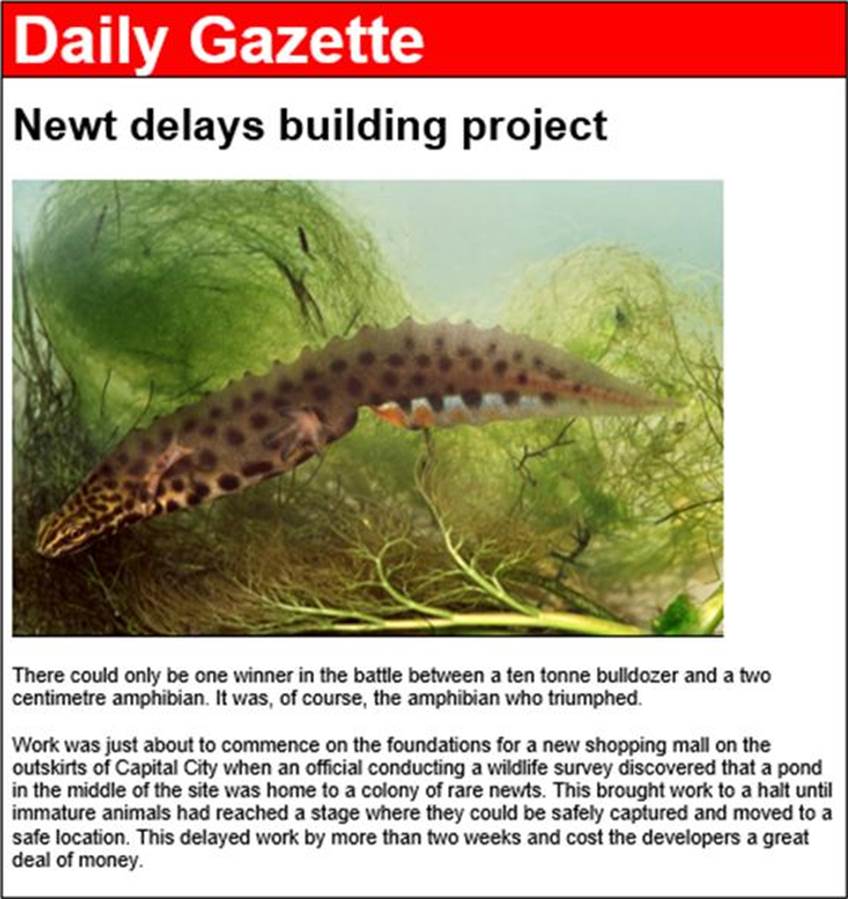
CORRECT TEXT
Two weeks have passed since the article about Wodd’s role in tax avoidance was published. Thankfully, the initial reaction was to condemn the celebrities who invest in tax avoidance and little was said about Wodd’s role in facilitating tax-efficient investments.
You have received the following email from Sarah Johns, Marketing Director:
From: Sarah Johns, Marketing Director
To: Senior Finance Manager
Subject: Forestry certification
Hi,
I am told that you would be a good person to talk to concerning the practical implications of a new venture that has been proposed.
I have attached a sales brochure that I downloaded from Tabel’s website. Tabel is a competing forestry company that has similar interests to our own. It has recently launched the certification scheme that it has described in its brochure. It has no competition for this certification in Marland because no other company has sought the qualifications required to offer an accredited Forest Certification Service.
Wodd has the necessary skills to offer a credible Forest Certification Service. Our forestry managers already aim to exceed all of the requirements set out by the global body. We also have a well-resourced internal audit department. I believe that we could transfer either forestry managers or internal auditors to a new external certification department. The transferred staff would complete the training required by the global body and would sit the associated examinations. We could then compete with Tabel’s service.
I need your advice on the following:
Could you explain how you imagine that a typical certification investigation would work and the skills that it would require? That will help us to decide whether to approach forestry managers or internal auditors and will also enable us to describe the work that they would be doing if they agreed to be transferred.
What are the challenges associated with motivating and evaluating the investigators in the certification service and how might we address these?
Sarah
Reference Material:
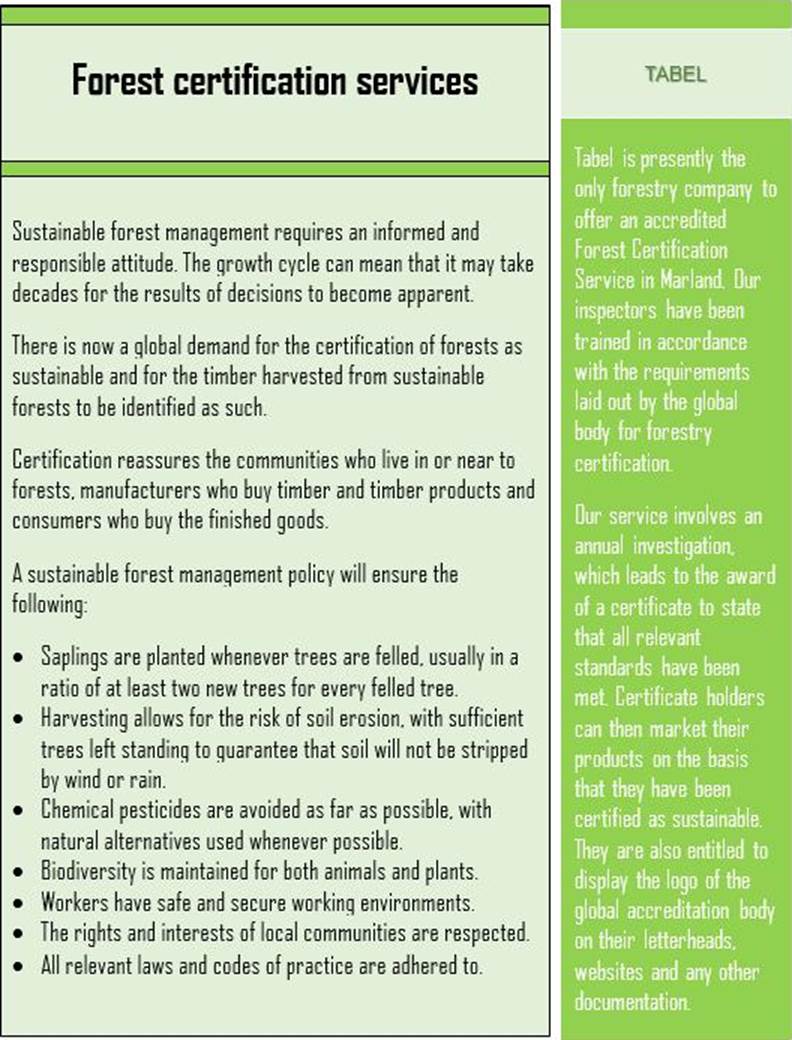
CORRECT TEXT
Peter Sorchi, Wodd’s Chief Executive has stopped you in the corridor:
"We signed a memorandum of understanding with the Bravadorian Government last night. Effectively, we are now the new owners of a forest in a new continent for us. It has already made it onto the business pages in the press.
Once the formalities are completed, we will be entering into new commercial territory. Our surveyors have looked at the first area that we intend to develop and there is a lot more hardwood than we first expected. That is good news in a way because it can be sold at a premium, but we don’t have any experience of selling hardwood and we are hardly going to pulp it for MDF or paper. I need you to identify the changes that we will have to make and to recommend how best to manage them.
The funding arrangements are still being worked out. Bravador’s banks are not in a position to fund a transaction of this size and none of the other banks that we have approached are prepared to lend to us. We will need to raise additional equity. I realise that we would normally make a rights issue, but I think that it would be simpler and cheaper to suspend the dividend for a year, which would cover most of the purchase price in itself. Please advise me on the advantages and disadvantages of doing that.
It would be ideal if you could let me have a briefing paper on both of these matters urgently."
Reference Material:
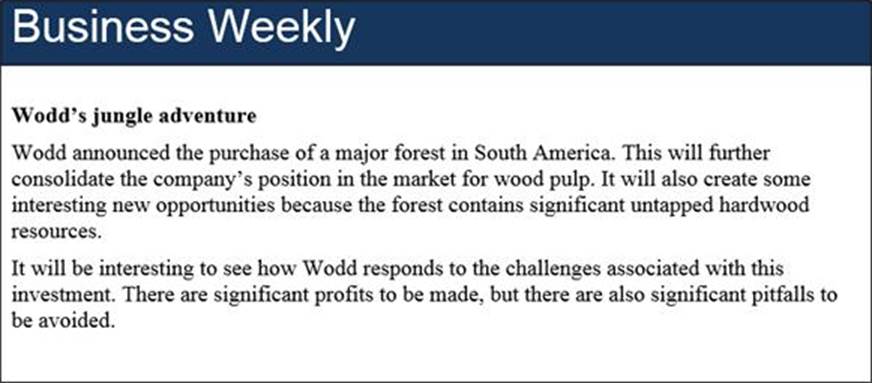
Latest CS3 Dumps Valid Version with 45 Q&As
Latest And Valid Q&A | Instant Download | Once Fail, Full Refund

